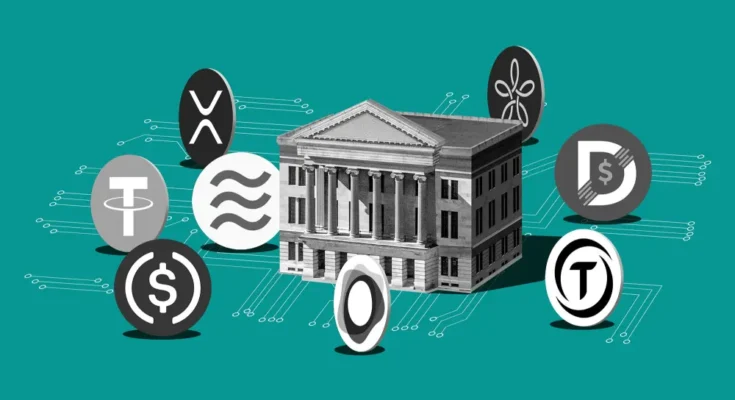1. Overview of the US Financial System:
In the intricate web of personal and business finances, loans play a pivotal role in shaping economic stability and growth. The United States, being a global economic powerhouse, boasts a diverse and robust financial system, providing a myriad of loan options to individuals and businesses alike. In this article, we will delve into the landscape of loans in the USA, exploring the various types, their significance, and the factors influencing the borrowing process.
2. Types of Loans in the USA:
a. Personal Loans:
Personal loans are versatile financial tools that can be used for various purposes such as debt consolidation, home improvement, or unexpected expenses. These unsecured loans are granted based on the borrower’s creditworthiness, income, and other financial factors.
b. Mortgages:
For many Americans, homeownership is a dream, and mortgages make this dream a reality. Mortgages are long-term loans used to purchase real estate. They come in various forms, including fixed-rate and adjustable-rate mortgages, catering to different financial preferences.
c. Auto Loans:
Auto loans facilitate the purchase of vehicles, providing borrowers with the option to pay for their cars over a specified period. Interest rates and terms vary, and factors like credit history and down payment influence the loan terms.
d. Student Loans:
Education is a significant investment in the USA, and student loans help make higher education accessible to a broader population. These loans can be federal or private, with different terms and conditions.
e. Business Loans:
Entrepreneurship thrives in the USA, and business loans are crucial for the establishment and growth of small and large enterprises. These loans can be used for starting a new business, expanding operations, or covering operational expenses.
f. Payday Loans:
In certain situations, individuals may turn to payday loans for short-term financial relief. However, these loans often come with high-interest rates and should be approached with caution due to their potential to lead to a cycle of debt.
3. Factors Influencing Loan Approval:

a. Credit Score:
A person’s creditworthiness is expressed numerically by their credit score. A higher credit score increases the likelihood of loan approval and favorable interest rates. Lenders assess credit scores to gauge the risk associated with lending.
b. Income and Employment:
Stable income and employment history are vital factors considered by lenders. They want assurance that borrowers have the financial capacity to repay the loan.
c. Debt-to-Income Ratio:
Lenders evaluate the borrower’s debt-to-income ratio to assess the proportion of income allocated to debt repayment. A lower ratio indicates a better ability to manage additional debt responsibly.
d. Collateral:
Secured loans, like mortgages and auto loans, require collateral. The value and type of collateral can impact loan terms and approval.
e. Loan Purpose:
The intended use of the loan can influence approval. For example, a business plan might be required for a business loan, while personal loans may have fewer restrictions on usage.
4. Interest Rates and Terms:
Interest rates vary based on the type of loan, the borrower’s creditworthiness, and market conditions. Fixed-rate loans have a constant interest rate throughout the loan term, providing predictability, while adjustable-rate loans may fluctuate with market changes.
Shorter terms typically have higher monthly payments but lower overall interest costs, while longer terms offer lower monthly payments but may result in higher overall interest expenses.
5. Government-backed Loans:

The US government plays a role in facilitating access to loans through various programs. For instance, the Federal Housing Administration (FHA) and the Department of Veterans Affairs (VA) offer mortgage programs with favorable terms for eligible individuals.
Similarly, federal student loans provide students with access to affordable education financing options, often with more forgiving repayment terms.
6. Challenges and Risks:
While loans are essential for economic growth, excessive borrowing and irresponsible lending can lead to financial challenges. High-interest rates, hidden fees, and predatory lending practices are concerns that borrowers need to be vigilant about.
Additionally, economic downturns can impact borrowers’ ability to repay loans, leading to increased default rates. The COVID-19 pandemic highlighted the importance of robust financial systems and government interventions to support borrowers during times of crisis.
7. Emerging Trends in the Loan Landscape:
a. Digital Lending:
The rise of technology has revolutionized the lending landscape, with online platforms offering quick and convenient access to loans. Digital lending streamlines the application process, often providing faster approvals and competitive rates.
b. Peer-to-Peer Lending:
Peer-to-peer lending networks circumvent established financial institutions by bringing independent lenders and borrowers together. This alternative lending model can offer more personalized terms and lower interest rates.
c. Green Loans:
As environmental consciousness grows, there is a rising trend in green loans aimed at financing eco-friendly projects and initiatives. These loans often come with incentives such as lower interest rates for sustainable practices.
Conclusion:
In the complex realm of personal and business finance, loans in the USA serve as indispensable tools for achieving various goals. Understanding the nuances of the lending landscape, including types of loans, approval factors, and emerging trends, empowers individuals and businesses to make informed financial decisions. While loans provide opportunities, responsible borrowing and vigilant financial management remain crucial for sustainable economic growth and prosperity.





2 Comments on “Landscape of Financial Stability Understanding Loans in the USA”